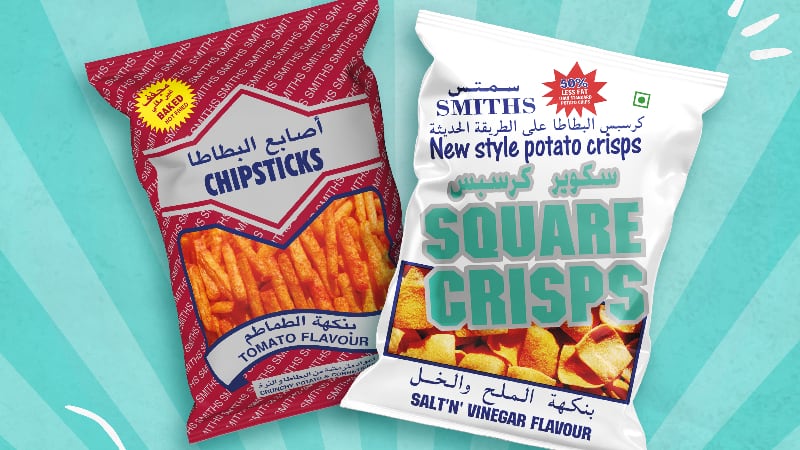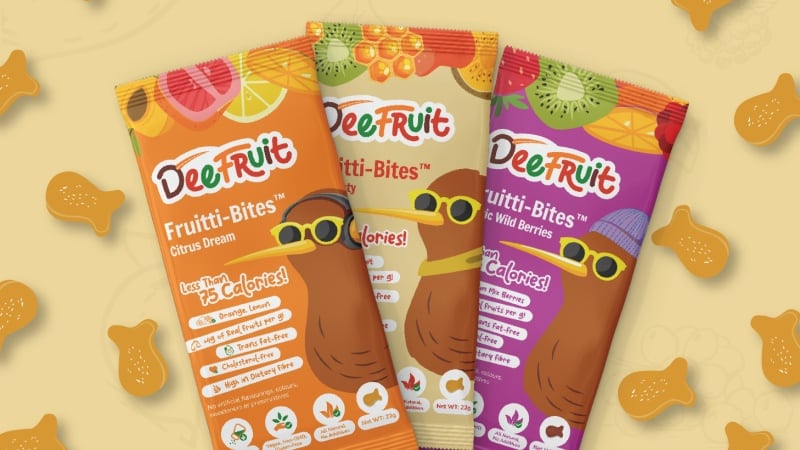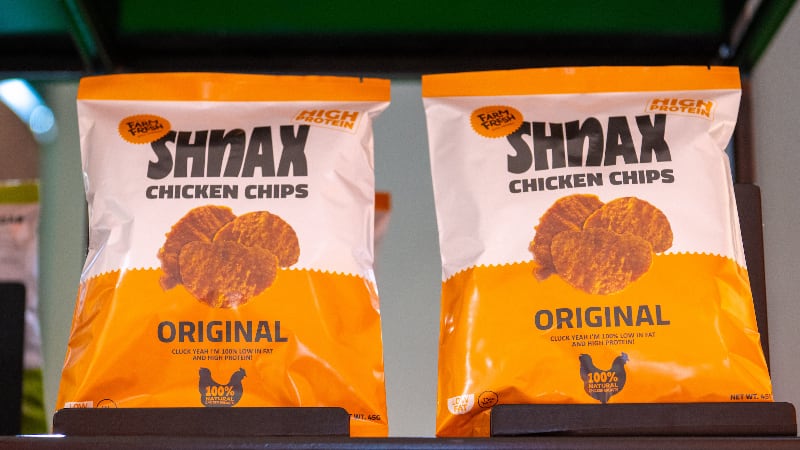Although the snacking sector has seen some of the most successful growth amongst food and beverage categories in Asia Pacific both through and beyond the pandemic, this success has translated into a great deal more competition within the industry due to many new companies seeking to enter the market as well as existing ones from other areas pivoting to gain entry as well.
In order to stand out in this increasingly crowded space, these companies have innovated in many different ways – but the consensus is generally that the age-old conundrum of snacks being ‘healthier’ but also ‘tastier’ has become ever more important.
“One of the most effective ways we have found is simply to implement portioned packaging and control portion size of the snacks, and so far this has been working well,” snacking brand SMITHS CEO Nasir Saigol told FoodNavigator-Asia.
“This is why a lot of our products and packaging have been created to be well under 100 calories per packet which allows us to maintain the original well-loved taste of the snacks but keep the portions reasonable.
“I can’t say right now that portion control is definitely the way forward for the snacking industry, but I can say that this is the most conservative way to bring healthy snacking into a consumer’s household and also have children enjoy these in a reasonable manner.
Watch the video below to find out more.
This is a technique that is wholeheartedly seconded by global snacking giant Mondelez, which has long touted portion control as a key factor in its ‘Mindful Snacking’ strategy.
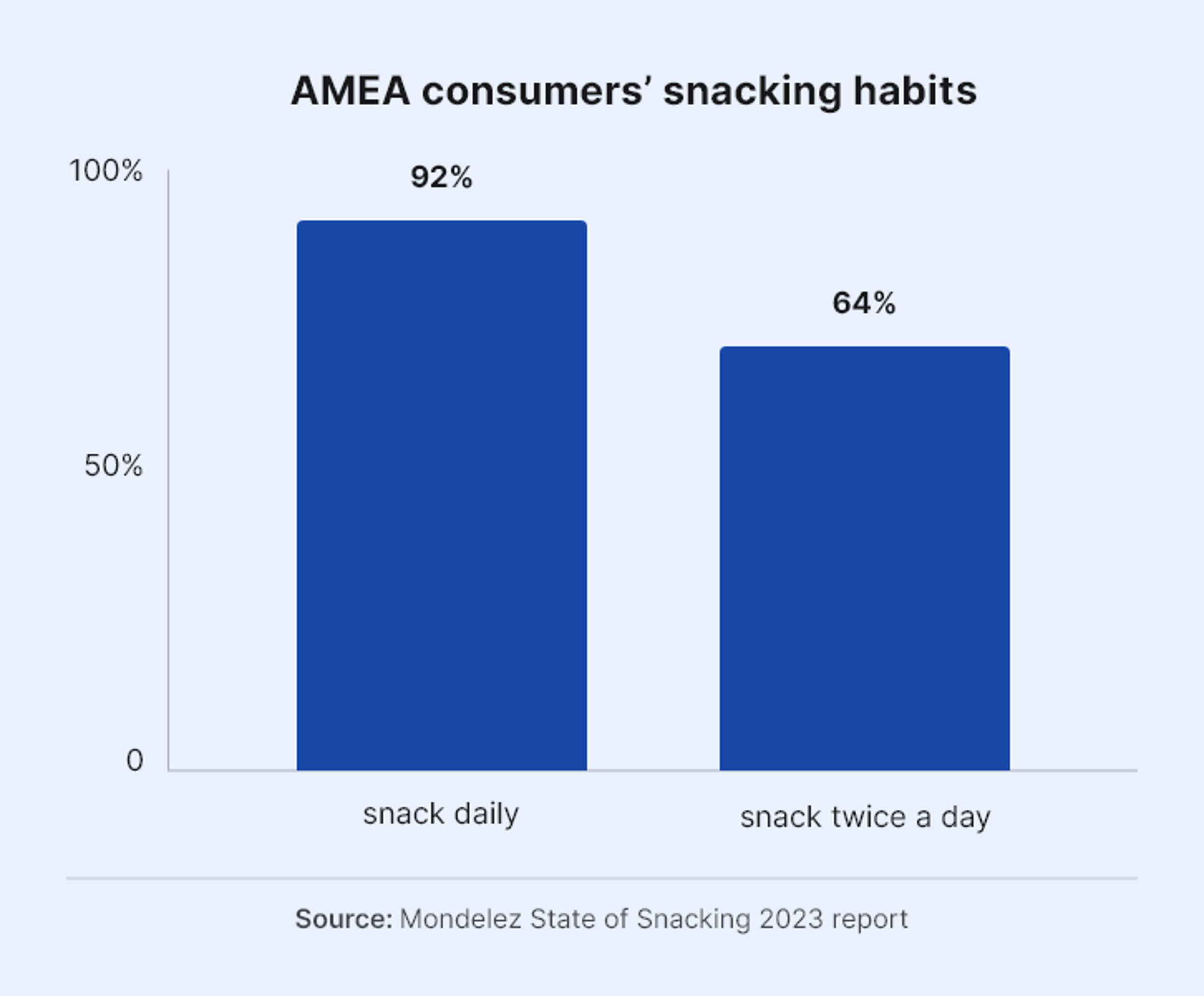
“Portion size is a key factor for mindful snacking as consumers look to meet a variety of snacking needs and it’s becoming increasingly top of mind,” Mondelez VP Strategy & Commercial Excellence AMEA Tomás Centeno told us.
“Nearly seven in 10 global consumers surveyed [in our latest State of Snacking report] said they actively look for snacks that are portion controlled – 67% to be exact, up five percentage points from last year.
“Mindful snacking is actually getting to be even more prominent in the APAC region – we saw that 84% of consumers are selective about the indulgent snacks they choose whilst still seeing snacking as essential.
“This includes factors such as getting more informed about their snacking choices, portion out snacks before eating them and check nutrition labels on snacks before making a purchase.”
Better base ingredients
In addition to portion control, experts in this industry have also strongly emphasised the importance of using better ingredients whether this be in terms of quality or nutrition.
“We see a huge opportunity in the plant-based snacks area [beyond the conventional potato or corn chips] – more whole plant-based snacks using actual whole plants as the base,” Hunter Foods CEO Ananya Narayan told us.
“Mushrooms in particular are trending globally due to its very special crunch, as is the okra which has seen a lot of interest from consumers – and the popularity of these two items led us to launch a whole separate better-for-you snack series focused on them.”
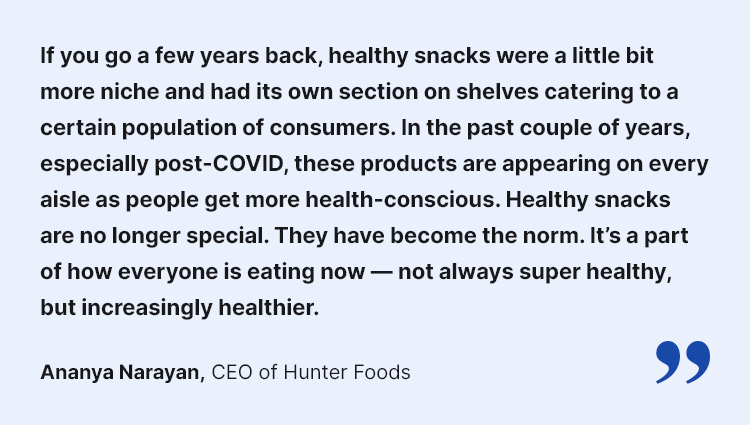
Narayan agreed that competition in the snacking market and the even more specialised better-for-you snacking category has greatly increased over the past few years, stressing that continuous product innovation and maintaining high quality is the only way to keep up.
“As the whole better-for-you snacking space has become a lot broader, the category has been growing very quickly, so of course competition is going to keep entering the category because there's a lot more room for it,” he said.
“At the same time, the entry of these new players means they're also helping to grow it so we're quite happy with competition coming in - But even in competition, there are two types i.e. those who are also innovating and growing the category, and those copycats who are just trying to do it and do it cheaper.
“The first type of competitors are much preferred, but regardless of which type we see, it is always important to stay one step ahead, and the key to that is constant innovation so as to keep to the benchmark of what consumers deem as better-for-you, which will in turnbring the industry’s gourmet standards up too.
Even in snacking companies with a specialised focus on one particular type of snack, there is also an urgency about improving their standing from a quality perspective within their sector – one example is Mamame tempeh chips.
“There are many other tempeh chips in the [Asian] market that use the traditional soybeans and palm oil as base ingredients, but this is not our target competition as we cater to a more global audience,” Mamame Whole Foods Chief Commercial Officer Liz Kang told us.
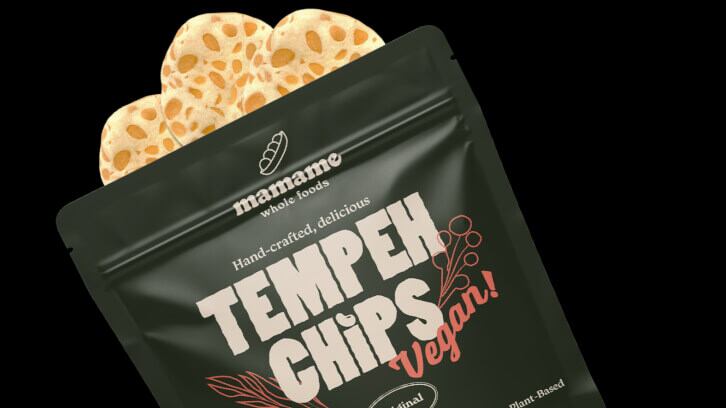
“Our chips are made with non-GMO black-eyed beans and tapioca flour, and are cooked in coconut oil – we will also be coming up with an alternative air-fried baked version in the coming year or so.
“The focus here is to go towards a healthier version of the tempeh chip, as we really believe in the concept of this chip [and also need to cater to consumers] who care more about their health and are more mindful about what they put into their bodies.”
“Our mission is to become the next acai or kombucha, because acai and kombucha are also regional superfoods that later became very popular globally due to their health benefits - we would like tempeh chips to have the same kind of impact around the world.”
Snacks for the sweet tooth
While the range and variety of new types of savoury snacks and especially chips have seen the bulk of growth, many industry players have also focused their efforts on developing sweet snacks due to consumer demand.
“In today’s world, cocoa continues to play an important role, with 82% of consumers surveyed believing that ‘chocolate is good for the soul’,” Mondelez International Chairman and CEO Dick Van der Put added.
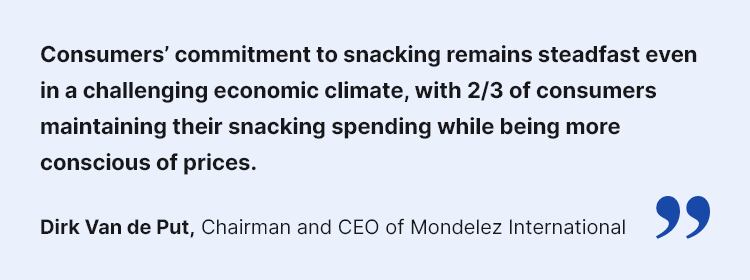
“When savoured and enjoyed mindfully, [this sweet snack] can become part of a mindful snacking strategy and be enjoyed as part of a balanced lifestyle – this is important as over half of all the consumers we surveyed said they would rather give up social media for a month than chocolate, showing how important it is to them.”
Dark chocolate in particular has become well-recognised as having potential to become part of a good diet if consumed in moderation, but many consumers also want sweet snacking options that can be recognised in a more clear-cut manner as being a healthy choice – and this is where fruits come into play.
“We are seeing a very strong trend and rise in demand for healthy snacks, hence have developed our DeeFruit range of fruit snacks,” Sainhall Commercial Manager Si Min Yeap told us.
“Every sachet of these snacks carries the nutritional equivalent of an apple with more than 4g of fruit concentrated into every 1g of product, and all products in this range are 75 kcal or less per pack with no added sugar or salt.”
“We are well aware that it can be difficult to find healthy items to snack on when a consumer is on-the-go, so rather than having to pop into a bakery for a croissant or something, these would be an option that is both healthier and more convenient.”
Catering to a wider audience
Experts have also cited one of the most crucial attributes for snacks to succeed in Asia as applicability, highlighting a need to ensure that at least most consumers in this target market are able to relate to these.
“We believe that snacks need to be definitely catered towards the widest range of audience possible, whether it be kids, elderly people, those with soy allergies, those who are halal consumers and so on – we need to try to be all encompassing,” Kang added.
“The key here is also to keep up with consumer trends in this region such that more consumers are familiar with particular aspects of your product, and we have found one of these to be fermentation.
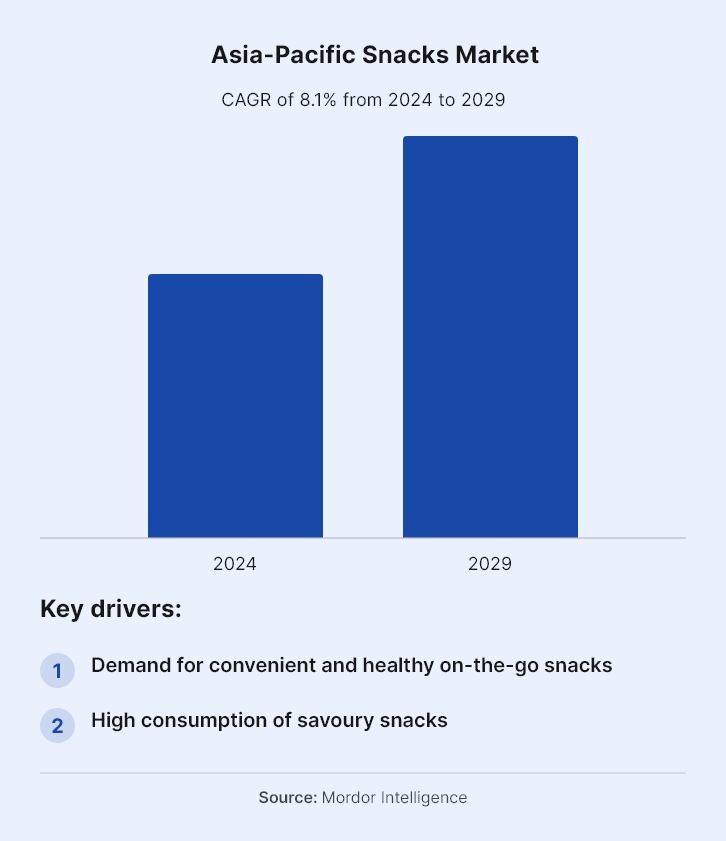
“Fermentation has become a lot more popular in the last decade especially with the sourdough boom during the pandemic, and is in fact one of the most energy-efficient, healthy ways to enhance the nutritional benefits of a product.
“Another trend relates back to healthier snacking and this is the demand for additive-free products, as consumers are now picking up their snacks in supermarket aisles and the first thing they do is to turn it around to look at the ingredients list to see things like calories, protein, fibre and so on, having become much more mindful.
“And it is in this trend that a focus on quality becomes so much more important because consumers can tell the difference now, e.g. not all high-protein chips are made the same and some have more preservatives or additives, which is a turn-off.”
Global salted egg snacks sensation IRVINS has long been a top-level snack choice for adult consumers given their rich salted egg flavouring enhanced with chilli peppers – but also in accordance with the idea of appealing to as many consumers as possible, the firm is now looking at developing snacks that can also cater to children.
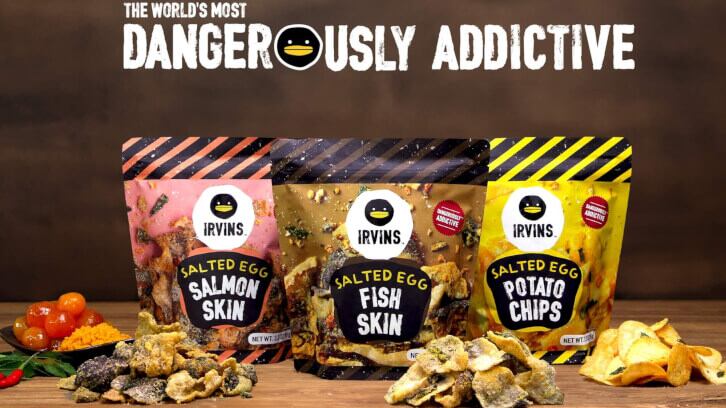
“We are working on a new salted egg cornflakes product which is specifically targeted at children and does not contain any red chilli pepper which all our other products have,” IRVINS Senior Manager of Business Development Aje Permana told us.
“These will also come in a smaller, easy-to-eat packaging size.”
The firm has also taken note of palate differences between Eastern and Western markets, and created a wide range of different products to cater to both.
“Our original Salted Egg Fish Skin used Pangasius dory fish skin, which had a stronger, fishier smell preferred by Asian consumers, but we realised that Western consumers did not appreciate this so much,” he added.
“So in addition to Salted Egg Potato Chips as an alternative, we also developed a Salted Egg Salmon Skin series as Western consumers are more familiar with the salmon fish and the smell is not quite as strong, so has been much better accepted.”



